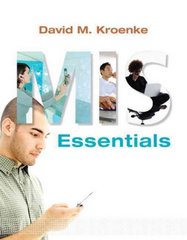Question
Angus McCleod is a 50-year old male. He is single, a sales representative for an ASX-listed technology firm, and earns a pre-tax salary of $200,000
Angus McCleod is a 50-year old male. He is single, a sales representative for an ASX-listed technology firm, and earns a pre-tax salary of $200,000 per annum. Due to the time involved with building his career, Mr McCleod never married and has no children. Mr McCleod has a 2-bedroom apartment in the Melbourne CBD which he rents, has no investment properties, and mostly lives within his net annual income. Mr McCleod has no debt, is in good health and has adequate insurance coverage. His current superannuation fund is worth roughly around $500,000 and is invested in long-term Australian government bonds, earning, on average, a risk-free rate of return of 1.61% per annum. Recently, Mr McCleod has inherited $1 million from a long-lost wealthy relative from Scotland. As a result of this substantial financial windfall, his main life goal is to retire when he turns 60. Specifically, he wants to live off his superannuation in retirement and use the money he has inherited to purchase acreage back in Scotland so as he can run an 'eco-friendly' highland cow farm (his life's dream!). Using some time value of money skills that he picked up in a finance elective unit during his undergraduate studies, Mr McCleod estimates that if he is to realise his goal, he will need to grow his $1 million inheritance to $3 million over a 10-year period; thus requiring an annualised rate of return of about 11.61%. To achieve this rate of return, he has acknowledged that he needs to invest his inheritance into shares (or equities) and take on moderate risk (comparable to that of the wider Australian stock market or the 'All Ordinaries Index'). The long-run annualised expected rate of return for the All Ordinaries Index is also 11.61% (inclusive of capital growth and dividends). In terms of his intended equities portfolio, Mr McCleod has indicated that he has the following investment limitations/restrictions: There are to be no 'fossil fuel' stocks included in the portfolio and there are to be no more than five (5) stocks/Real Estate Investment Trusts (REITs) in the portfolio Companies selected must be aligned with sound environmental, social and governance (ESG) practices Individual stocks/REITs can vary in market risk and consist of varying size and style characteristics, but the overall portfolio market risk must be similar to that of the benchmark index (e.g., All Ordinaries Index; Beta = 1) A diversified, passive 'buy-and-hold' investment approach must be employed Must be fully invested in ASX-listed shares and REITs only (i.e., close to zero cash balance with no short-term cash needs resulting from an Australian equities portfolio) Exchange traded funds (ETFs) are NOT to be invested in.
What would be the Total expected return if betas were as follows:
| Stock/REIT ticker code | Allocation in dollars form $ | Allocation in % form | Beta |
| Australian Ethical Investment ltd- AEF on the ASX | $200,000 | 20% | 1.12 |
| Blue scope steel ltd - BSL on ASX | $200,000 | 20% | 1.14 |
| Transurban Group - TCL on ASX | $200,000 | 20% | 0.85 |
| Clean Energy - CEN on the ASX | $200,000 | 20% | 1.4 |
| APA Group - APA on ASX | $200,000 | 20% | 0.96 |
| Total Expected return |
Step by Step Solution
There are 3 Steps involved in it
Step: 1

Get Instant Access to Expert-Tailored Solutions
See step-by-step solutions with expert insights and AI powered tools for academic success
Step: 2

Step: 3

Ace Your Homework with AI
Get the answers you need in no time with our AI-driven, step-by-step assistance
Get Started


